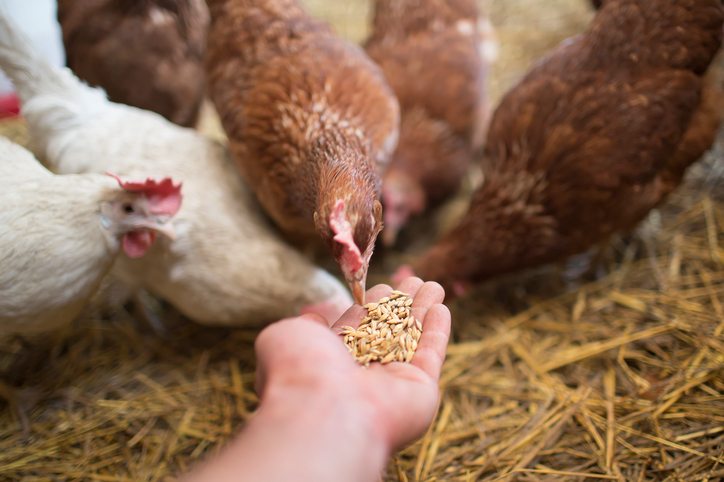Force feeding a chicken may sound alarming, but it is sometimes necessary to ensure the health and survival of your bird. Poultry enthusiasts often face the challenge of dealing with sick or injured chickens that cannot feed themselves. Knowing how to force feed a chicken can make a tremendous difference in these situations.
The practice of force feeding, while delicate, must be done correctly to avoid harming the chicken. This guide aims to provide you with a thorough understanding of the process, offering practical tips and techniques for safe and effective force feeding.

Understanding the Need for Force Feeding
Why Force Feeding is Sometimes Necessary
Chickens, like other animals, can sometimes fall ill or endure injuries that affect their ability to eat. In such instances, force feeding may be the only option to provide necessary nutrients until the chicken recovers.
Conditions such as impacted crop, infections, or injuries can make self-feeding difficult or impossible. Force feeding ensures the chicken receives essential nutrients, which can be crucial for its recovery and survival.
Identifying When to Force Feed
Before deciding to force feed a chicken, it is essential to recognize whether it truly needs intervention. Signs that a chicken needs force feeding include:
- Significant weight loss
- Lethargy
- Refusal to eat for more than 24 hours
- Visible signs of illness or injury
If you observe these symptoms, consult with a veterinarian to confirm the diagnosis and get professional guidance.

Preparation for Force Feeding
Essential Supplies for Force Feeding
Before you begin, gather the necessary supplies. You will need:
- A syringe (without a needle)
- Nutritional feed or a liquid diet formulated for poultry
- Clean water
- Towels or cloths
- Helper (if available)
Ensure that you have a clean and calm environment to avoid stressing the chicken further.
Choosing the Right Nutritional Feed
Selecting the correct feed is vital for the force feeding process. Choose a high-quality, easily digestible nutritional feed or a liquid diet specially formulated for chickens. These feeds are rich in essential nutrients that contribute to the bird’s recovery.
To learn more about chicken breeds and their dietary needs, you can check out this article on Breed Sizes.

Step-by-Step Guide to Force Feeding
Calming the Chicken
Before starting the process, it is important to calm the chicken to avoid causing additional stress. Wrap the chicken in a towel, leaving only its head exposed. This helps to restrict its movement and make it feel secure.
Administering Food
Using the syringe, gently introduce the feed into the chicken’s mouth. Be careful to avoid inserting the syringe too far to prevent choking. Administer the food slowly, allowing the chicken to swallow at its own pace.
If you are unsure about the right amount, it is best to start with small quantities and gradually increase based on the bird’s response and needs.

Post-Feeding Care
Monitoring the Chicken
After force feeding, closely monitor the chicken for any signs of discomfort or distress. Ensure that it is kept in a warm and quiet environment. Continue to observe its eating habits and overall health.
When to Resume Normal Feeding
Force feeding should be a temporary measure. As the chicken starts to show signs of recovery and begins to eat on its own, gradually reduce the frequency of force feeding. Eventually, allow the chicken to resume normal feeding habits.
Common Mistakes to Avoid
Overfeeding
One common mistake is overfeeding. This can lead to complications such as aspiration, where the feed enters the airway. Always start with small amounts and monitor the chicken’s response.
Using the Wrong Feed
Using an inappropriate feed can do more harm than good. Always choose a nutritional feed specifically formulated for chickens to ensure they receive the right nutrients.
Frequently Asked Questions
How Often Should I Force Feed My Chicken?
The frequency of force feeding depends on the chicken’s condition and the veterinarian’s recommendations. However, it is generally done every few hours until the chicken begins to eat on its own.
Can Force Feeding Harm My Chicken?
When done correctly, force feeding should not harm your chicken. It is crucial to follow the recommended techniques and consult with a veterinarian for guidance.
What Should I Do If My Chicken Refuses to Swallow?
If the chicken consistently refuses to swallow, stop the feeding process and consult with a veterinarian immediately. They may need to treat the underlying issue first.
Conclusion
Force feeding a chicken can be a challenging yet necessary task for ensuring the health and recovery of your bird. With the right knowledge and techniques, you can perform this process safely and effectively. Always consult with a veterinarian for validation and further guidance.
If you are interested in more resources about chicken care, check out this External Link to learn more. For specialized information on different chicken breeds, visit Longest Living Chickens and Jumbo Egg Layers.
As an Amazon Associate, I earn from qualifying purchases.








